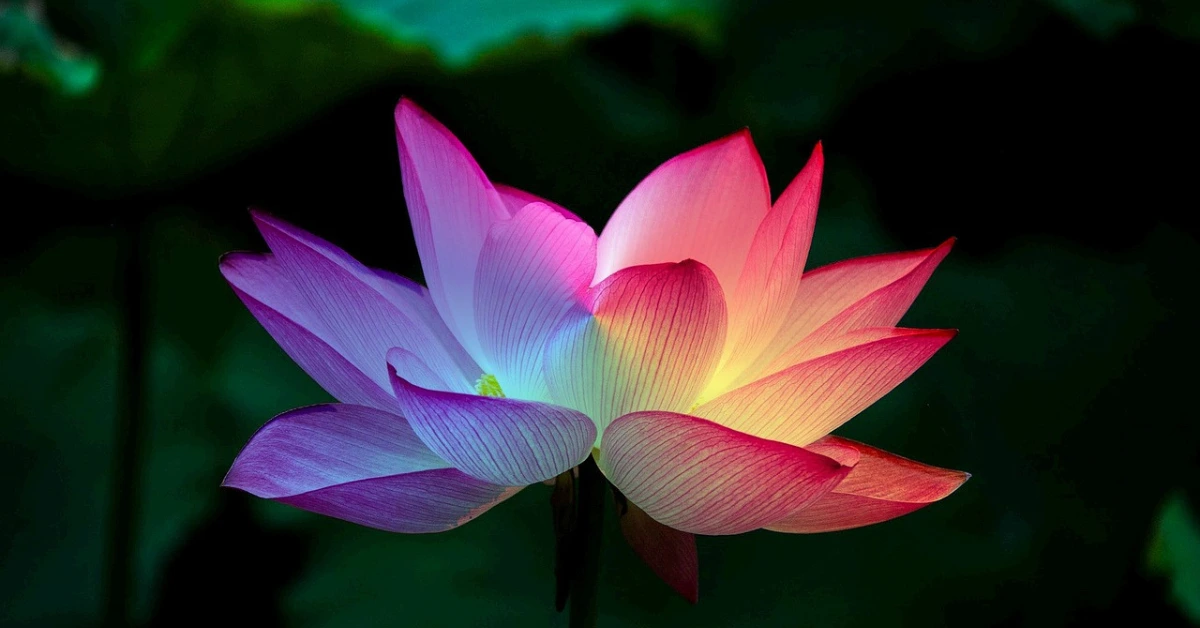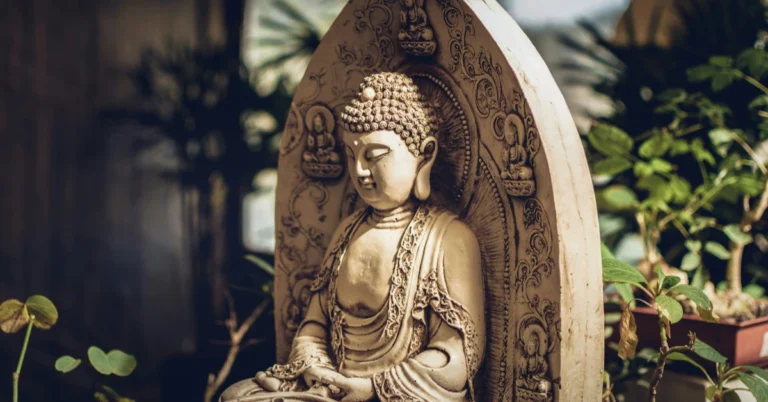Guided Kundalini Meditation is a powerful technique that has been practiced for thousands of years. It is a form of meditation that focuses on awakening the Kundalini energy that lies dormant at the base of the spine. This energy is believed to be the source of our spiritual and creative potential, and when awakened, it can lead to profound states of consciousness and personal transformation.
Guided Kundalini Meditation involves a series of techniques designed to awaken the Kundalini energy and guide it through the chakras, or energy centers, of the body. These techniques may include breathing exercises, chanting, visualization, and physical postures. By following a guided meditation, practitioners can learn to focus their attention and cultivate a deeper awareness of their inner world.
There are many benefits to practicing Guided Kundalini Meditation. It can help to reduce stress and anxiety, increase feelings of well-being, and improve overall physical health. With regular practice, Guided Kundalini Meditation can be a powerful tool for transforming your life and unlocking your full potential.
Pros ✅
✅ The cushion set includes an extra free cover
✅ Filled by 100% top-grade buckwheat hull
✅ Layer of foam offers a soft landing
Cons 🚫
🚫 The velvet cover may not be as durable as the cotton cover
🚫 The cushion may be too firm for some users
What does Kundalini mean?
Kundalini is a Sanskrit term that refers to the dormant energy that lies coiled at the base of the spine. It is often described as a serpent-like energy that can be awakened through various practices, including meditation, yoga, and pranayama. Kundalini is said to be the source of all energy and creativity in the body, and its awakening is believed to lead to spiritual enlightenment and self-realization.
In Kundalini meditation, the focus is on awakening this dormant energy and directing it upwards through the chakras, or energy centers, in the body. This can lead to a range of physical, emotional, and spiritual experiences, including feelings of bliss, increased energy, and heightened awareness.
It is important to note that Kundalini awakening can be a powerful and potentially transformative experience, and it is not recommended for everyone. It is important to approach Kundalini meditation with caution and to seek guidance from an experienced teacher or practitioner.
In guided Kundalini meditation, the teacher or guide will lead you through a series of exercises and visualizations designed to awaken and direct the Kundalini energy. This can include breathwork, chanting, and movement, as well as specific postures and mudras. By following the guidance of the teacher, you can safely and effectively explore the transformative potential of Kundalini meditation.
Understanding Kundalini is an important part of practicing guided Kundalini meditation. By learning about the nature of this powerful energy and how to awaken and direct it, you can tap into your own inner wisdom and experience the transformative power of Kundalini meditation.
Now what is Guided Kundalini Meditation?

Guided Kundalini Meditation is a form of meditation that aims to awaken the kundalini energy that lies dormant at the base of the spine. This energy is believed to be the life force that runs through our entire body and is responsible for our physical, emotional, and spiritual well-being.
During Guided Kundalini Meditation, a teacher or guide will lead the practitioner through a series of exercises and techniques designed to activate and raise the kundalini energy. This is done through a combination of breathing exercises, chanting, and physical movements.
The purpose of Guided Kundalini Meditation is to help the practitioner experience a state of deep relaxation and inner peace. It is believed that by awakening the kundalini energy, one can access higher states of consciousness and tap into their inner wisdom and creativity.
Guided Kundalini Meditation is suitable for both beginners and experienced meditators. It is important to approach this practice with an open mind and a willingness to explore the depths of your being. It is also important to work with a qualified teacher or guide who can provide guidance and support throughout the process.
Guided Kundalini Meditation is a powerful tool for personal transformation and spiritual growth. It can help you connect with your inner self and tap into your full potential. If you are interested in exploring this practice, I recommend seeking out a qualified teacher or guide and approaching the process with an open mind and heart.
5 Benefits of Guided Kundalini Meditation

Guided Kundalini Meditation is a powerful tool that can have many benefits for individuals who practice it regularly. Here are some of the benefits that I have personally experienced and that have been reported by others:
- Increased energy and vitality: Kundalini Meditation can help increase energy levels and vitality by activating the Kundalini energy that lies dormant at the base of the spine. This can lead to greater physical and mental stamina.
- Improved focus and concentration: Guided Kundalini Meditation can help improve focus and concentration by training the mind to stay present and focused on the present moment. This can lead to greater productivity and efficiency.
- Enhanced creativity: Kundalini Meditation can help enhance creativity by opening up the channels of inspiration and intuition. This can lead to greater artistic expression and innovation.
- Greater self-awareness: Guided Kundalini Meditation can help increase self-awareness by allowing individuals to connect with their inner selves and gain a deeper understanding of their thoughts, feelings, and emotions. This can lead to greater self-acceptance and personal growth.
- Improved relationships: Kundalini Meditation can help improve relationships by promoting a greater sense of compassion, empathy, and understanding. This can lead to more harmonious and fulfilling relationships with others.
Guided Kundalini Meditation can have many benefits for individuals who practice it regularly. Whether you are looking to reduce stress, increase energy, improve focus, enhance creativity, increase self-awareness, or improve relationships, Kundalini Meditation can help you achieve your goals.
Process of Guided Kundalini Meditation

Guided Kundalini Meditation is a powerful practice that can help us awaken the dormant energy within us and achieve spiritual growth. The process of Guided Kundalini Meditation involves three main stages: Preparation, Execution, and Completion.
Preparation
Before starting the Guided Kundalini Meditation, it is essential to prepare yourself mentally and physically. Here are a few steps that can help you prepare for the meditation:
- Find a quiet and comfortable place where you can sit or lie down without any disturbance.
- Wear comfortable clothes that do not restrict your movement or breathing.
- Set an intention for your meditation. This could be anything from healing a specific issue to achieving inner peace.
- Take a few deep breaths and relax your body.
Execution
Once you are prepared, you can start the Guided Kundalini Meditation. Here are the steps you need to follow:
- Follow the guidance of the teacher or the audio recording that you are using for the meditation.
- Focus your attention on your breath and try to synchronize it with the instructions provided.
- Visualize the energy rising from the base of your spine and moving up through your chakras.
- Chant or repeat a mantra that resonates with you.
- Allow yourself to feel the sensations and emotions that arise during the meditation.
Completion
After completing the Guided Kundalini Meditation, it is essential to take a few minutes to ground yourself and integrate the experience. Here are a few steps that can help you complete the meditation:
- Take a few deep breaths and bring your attention back to your body.
- Wiggle your fingers and toes to awaken your physical senses.
- Rub your hands together and place them on your eyes for a few seconds.
- Express gratitude for the experience and the guidance you received.
In conclusion, the process of Guided Kundalini Meditation involves preparation, execution, and completion. By following these steps, you can awaken your inner energy and achieve spiritual growth.
Common Mistakes in Guided Kundalini Meditation and How to Avoid Them

As with any meditation practice, there are common mistakes that can hinder progress and lead to frustration. Here are some mistakes to avoid when practicing Guided Kundalini Meditation:
1. Not setting intentions
One of the most important aspects of Guided Kundalini Meditation is setting intentions. Without clear intentions, it can be difficult to focus and achieve the desired results. Before beginning your practice, take a few moments to set your intentions. What do you hope to achieve through meditation? What areas of your life do you want to improve? By setting clear intentions, you can focus your mind and energy in a specific direction.
2. Forcing the process
It’s important to remember that Kundalini energy is a powerful force that should be respected. Trying to force the process can lead to negative side effects such as headaches, dizziness, and emotional instability. Instead of trying to force the process, allow the energy to flow naturally. Trust that the energy will move through your body when the time is right.
3. Neglecting the breath
The breath is an essential component of Kundalini Meditation. Neglecting the breath can lead to shallow breathing and a lack of focus. Remember to breathe deeply and rhythmically throughout your practice. This will help to calm the mind and allow the energy to flow more freely.
4. Skipping warm-up exercises
Warm-up exercises are an important part of preparing the body for Kundalini Meditation. Skipping these exercises can lead to muscle strains and other injuries. Take the time to warm up your body before beginning your practice. This can include stretching, yoga poses, or other exercises that help to loosen the muscles and joints.
By avoiding these common mistakes, you can enhance the effectiveness of your Guided Kundalini Meditation practice. Remember to set intentions, respect the power of Kundalini energy, focus on the breath, and warm up your body before beginning your practice. With consistent effort and dedication, you can experience the transformative power of Kundalini Meditation.
Guided Kundalini Meditation for Beginners

As a beginner to Kundalini meditation, it is important to start with guided meditations that can help you understand and connect with your body’s energy centers. Guided Kundalini meditation is an excellent way to begin your journey towards spiritual growth and personal transformation.
There are various guided Kundalini meditations available that can help you activate and balance your chakras. Some of the popular guided Kundalini meditations for beginners include:
- Guided Kundalini Meditation for Beginners by Spirit Voyage: This guided meditation is designed to help beginners activate their Kundalini energy and balance their chakras. The meditation is led by Snatam Kaur, a renowned Kundalini yoga teacher and musician. The meditation includes breathing exercises, mantras, and visualization techniques.
- Kundalini Meditation for Beginners with Anne Novak: This guided meditation is designed to help beginners awaken their Kundalini energy and experience a deep sense of relaxation and peace. The meditation is led by Anne Novak, a certified Kundalini yoga teacher. The meditation includes breathing exercises, mantras, and mudras.
- Guided Kundalini Meditation for Beginners by The Honest Guys: This guided meditation is designed to help beginners activate their Kundalini energy and balance their chakras. The meditation is led by The Honest Guys, a popular YouTube channel that provides guided meditations for various purposes. The meditation includes breathing exercises, visualization techniques, and affirmations.
- Kundalini Meditation for Beginners with Maya Fiennes: This guided meditation is designed to help beginners awaken their Kundalini energy and experience a deep sense of relaxation and peace. The meditation is led by Maya Fiennes, a certified Kundalini yoga teacher and musician. The meditation includes breathing exercises, mantras, and mudras.
It is important to choose a guided Kundalini meditation that resonates with you and your goals. You can try different guided meditations and see which one works best for you. As you become more comfortable with guided meditations, you can also try practicing Kundalini meditation on your own.
Remember to always listen to your body and practice Kundalini meditation with awareness and intention. With regular practice, guided Kundalini meditation can help you activate your Kundalini energy and experience a deep sense of connection and transformation.
Advanced Guided Kundalini Meditation Techniques
As someone who has been practicing Kundalini meditation for some time now, I have discovered that there are many techniques that can help take your practice to the next level. Here are some advanced guided Kundalini meditation techniques that I find particularly effective:
1. Breath of Fire
The Breath of Fire is a powerful technique that involves rapid, rhythmic breathing through the nose while pumping the navel in and out. This technique is said to help awaken the Kundalini energy and increase overall vitality. To practice the Breath of Fire, sit in a comfortable position with your spine straight and your hands on your knees. Begin by taking a deep inhale, then exhale forcefully through your nose while pumping your navel in and out. Continue the rhythmic breathing for several minutes, gradually increasing the speed and intensity.
2. Chakra Focus
Focusing on the chakras during meditation can help to balance and activate these energy centers in the body. To practice chakra focus, begin by sitting in a comfortable position and closing your eyes. Take a few deep breaths to relax, then visualize each chakra in turn, starting at the base of the spine and working your way up to the crown of the head. As you focus on each chakra, visualize it as a spinning wheel of energy, and imagine the energy flowing freely through your body.
3. Mantra Meditation
Using a mantra during meditation can help to quiet the mind and focus your attention. In Kundalini meditation, the mantra “Sat Nam” is often used. To practice mantra meditation, sit in a comfortable position with your spine straight and your hands in a mudra (hand gesture) of your choice. Begin repeating the mantra “Sat Nam” silently to yourself, synchronizing the repetition with your breath. As you repeat the mantra, focus your attention on the sound and vibration of the words.
4. Visualization
Visualization is a powerful technique that can help to deepen your meditation practice. To practice visualization, sit in a comfortable position and close your eyes. Take a few deep breaths to relax, then visualize a scene or image that is calming and peaceful. It could be a natural setting, such as a beach or forest, or a symbol that is meaningful to you. Allow yourself to fully immerse in the visualization, using all of your senses to experience it fully.
These are just a few of the advanced guided Kundalini meditation techniques that I find effective. With regular practice, you may find that these techniques help to deepen your meditation practice and awaken the Kundalini energy within you.
FAQ
What are the symptoms of a Kundalini awakening?
Kundalini awakening can bring about various physical, emotional, and spiritual symptoms. Some of the common physical symptoms include tingling sensations, heat or cold sensations, and muscle twitches. Emotional symptoms may include heightened emotions, mood swings, and intense feelings of joy or sadness. Spiritual symptoms may include a sense of oneness with the universe, heightened intuition, and a deeper connection to the divine.
What happens during Guided Kundalini meditation?
Kundalini meditation involves the use of breathing techniques, mantras, and movements to awaken the Kundalini energy that lies dormant at the base of the spine. During meditation, the energy moves up through the chakras, clearing blockages and bringing about a sense of balance and harmony.
What are the three types of Kundalini?
According to traditional Hindu texts, there are three main types of Kundalini energy: Sattva, Rajas, and Tamas. Sattva Kundalini is associated with purity, wisdom, and spiritual growth. Rajas Kundalini is associated with passion, ambition, and creativity. Tamas Kundalini is associated with lethargy, ignorance, and darkness.
How can Kundalini music enhance meditation practice?
Kundalini music is specifically designed to help awaken the Kundalini energy and enhance the meditation practice. The music typically features repetitive mantras and rhythms that help to calm the mind and focus the energy.
What is the role of Mantra in Kundalini awakening?
Mantra is a powerful tool that is often used in Kundalini meditation to help focus the mind and awaken the Kundalini energy. The repetition of a specific sound or phrase is believed to create a vibration that resonates with the energy centers in the body, helping to clear blockages and promote healing.
Now that you experienced your first guided kundalini meditation, we’d love to hear your thoughts and experiences. Share your insights with us in the comments below!






